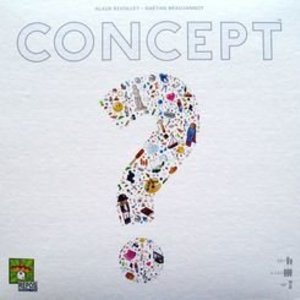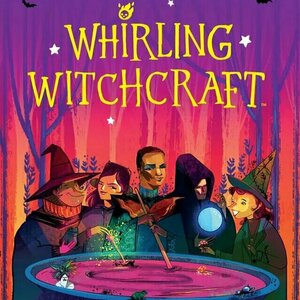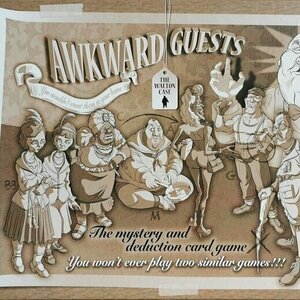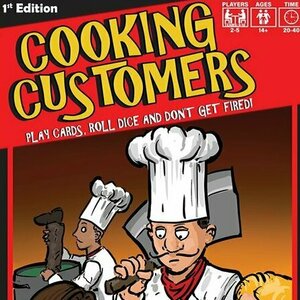
Cooking Customers
Tabletop Game
Play cards, roll dice and don't get fired! In Cooking Customers you will need to hire cooks to...

The Colonists
Tabletop Game
In The Colonists, a.k.a. Die Kolonisten, each player is a mayor of a village and must develop their...
Boardgames CivBoardgames TilePlacementGames

Century: Golem Edition
Tabletop Game
Century: Golem Edition is a re-themed version of Century: Spice Road set in the world of Caravania....
Boardgames GatewayGames AwardWinningGames BetterArtwork ArtisticGames EngineBuildingGames

King Oil
Tabletop Game
This MB game comes with a plastic "board". Its size is dictated by the three randomizing discs...
Boardgames RetroGames
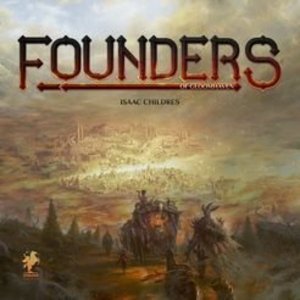
Founders of Gloomhaven
Tabletop Game
Founders of Gloomhaven is a competitive tile-placement, action-selection, city-building game in...
City Building

Wayfarers of the South Tigris
Tabletop Game
Wayfarers of the South Tigris is set during the height of the Abbasid Caliphate, circa 820 AD. As...
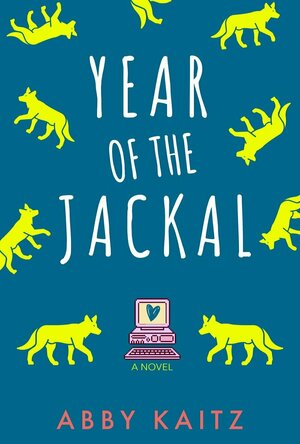
Year of the Jackal (Bramburgh Jackals #2)
Book
It’s Silicon Valley meets the Ivy League in this new adult romantic comedy starring a computer...
Contemporary MM Romance Romantic Comedy Enemies to Lvers Opposites Attrace
Purple Phoenix Games (2266 KP) rated Whirling Witchcraft in Tabletop Games
Nov 9, 2021
Whirling Witchcraft is a game of simultaneous action selection and variable powers in which players take on the roles of witches creating various ingredients to be used in future potions. The neighboring witches are always on the lookout for new recipes, so of course you’ll share those secrets and even some ingredients with them!…….BUT these ingredients can be volatile, and having too many on your workbench could cause an explosion! Which witch is sly enough to not only manage their ingredients wisely, but also overflow opponents with extra ingredients?
Disclaimer: We were provided with a copy of this game for the purposes of this review. This is a finalized retail copy of the game, and what is described and pictured below is what you will get when you purchase this game. -L
To setup for a game, each player receives a player board, cauldron, and Arcana tracker with corresponding tokens. Players are randomly dealt 2 Personality Cards, and choose one to use for the game. Personality Cards offer unique powers or recipes for use during the game. All recipe cards are shuffled, and 4 cards are dealt to each player. Players receive a number of starting ingredients (cubes) to their workbench (player board), as stated on their Personality card, and the remaining ingredients go into a general supply. Choose a starting player and the game is ready to begin! Pictured below is the setup for a 3-player game.
This game is played over a series of rounds, and the turns in each round are performed simultaneously. Each round is broken down into two phases: the Study Phase and the Brewing Phase. The first step of the Study Phase is to Play recipes. Players look at the 4 recipe cards in hand and select one to play this round. Cards are placed face-down below the player boards. The next step, Reveal recipes, is pretty straightforward – all players reveal their chosen recipe and add it to their other recipes already in play. The final step of this phase is to resolve Arcana. Certain recipe cards have Arcana icons on the top that are collected when the recipe is played. Arcana comes in three different types (Book, Potion, and Raven), and is tracked on your Arcana tracker. When you have reached a certain amount of Arcana, you have the opportunity to trigger a special effect for the current round. For example, triggering the Raven Arcana allows you to immediately remove up to 2 ingredients from your workbench. Arcana can play into your strategy, so keep an eye on which recipes offer certain types of Arcana! Players check to see if any Arcana has been triggered, and perform the effects if they so choose, and the round then continues to the next phase.
The second phase of the round, the Brewing Phase, is broken down into 4 steps: Produce ingredients, Pass cauldrons, Check for winners, and Pass recipe cards. The Produce ingredients step is performed by all players simultaneously. Players will choose which recipe cards they have in play to be used this round. To use a recipe, you place ingredients (cubes) from your workbench on the ‘input’ spaces of the recipe card – all input spaces on a recipe card must be filled for the recipe to be completed. When you complete a recipe, take the corresponding ingredients shown on the ‘output’ spaces of that recipe card from the general supply. Players can decide how many/few of their recipe cards to be used each round (one, a few, or all of them), and each recipe card can only be used once per round. When all players are finished using their recipe cards, the ingredients are distributed. Ingredients from the ‘input’ spaces of a recipe go back to the general supply, and ingredients left on the ‘output’ spaces go into your cauldron.
This leads us to the next step – Pass cauldrons. All players will pass their cauldron (and the ingredients on it) to the player on their right. The ingredients from your new cauldron are now added to your workbench. Each type of ingredient has a finite number of spaces on your workbench, though. If these new ingredients cause you to completely fill up a row, any excess ingredients of that type are given back to the player who passed you the cauldron. Any ingredients you get back from an opponent go at the top of your player board, into your Witch’s Circle. When all players have resolved their new ingredients, the next step is to check for winners. If any player has 5 or more ingredients in their Witch’s Circle, they are declared the winner and the game ends! If nobody has at least 5 ingredients in their Witch’s Circle, players will pass their hand of remaining recipe cards to the player on their left, draw back up to 4 cards, and a new round begins. The game continues in this fashion until a player has at least 5 ingredients in their Witch’s Circle by the end of the round.
As you can tell from my intro, as well as the rating graphic, I really love this game. I came into it expecting something light, cutesy, and fun, and what I got was so much more than that. Yes, the components (more on that later) and artwork are colorful and eye-catching, but the gameplay is what really surprised me. For a game that literally only has 2 mechanics listed on BGG (simultaneous action selection and variable player powers), the amount of strategy in this game blew me away. Is it the most strategic game I’ve ever played? No. But it was one that kept me engaged and thinking the whole time. There are 3 major elements that you have to consider: recipes, ingredients, and your opponents. For recipe cards, you have to strategize which recipe to add to your tableau, as well as which recipes to use each round. You are allowed to use as many recipes in a round as you wish, so which ones are the best use of your resources? The next element: ingredients. Aside from strategizing about your recipe cards, you have to figure out how to best manage your ingredients. Which recipes offer the output you want? Which ones eat up large numbers of ingredients? These are all things you have to be considering during the Brewing Phase. And finally, you have to keep an eye on your opponents. You ultimately win by causing your neighbor to have an ‘overflow’ of ingredients – so which recipes can produce ingredients that they don’t need more of? Everyone can see each others’ player boards, which gives you a little insight into perhaps which recipe cards you want to activate this round. Add the fact that pretty much all of this is happening simultaneously?! That just is another layer to the strategy you need for this game! Even just describing this gameplay and strategic implications has me psyched to play again! There is much more to Whirling Witchcraft than meets the eye, and that makes it an awesome game to me.
Ok, so the part we’ve all be waiting for – components! The player boards, cards, and Arcana tokens are all great quality, and vibrant in color. The artwork itself is a unique style that really catches the eye and fits the theme extremely well. The iconography/color-coded ingredients are clear to differentiate, and help streamline the gameplay. The ingredient cubes are your standard wooden cubes, and they are nice and sturdy for their small size. The 3D cauldrons are sooooo cool! Are they necessary to the gameplay? Wellllll not entirely – you could easily just use a simple cardboard circle on which to place ingredients. BUT they make the game feel more immersive, exciting, and fun to play! AEG could have as easily not gone with the 3D idea, but the inclusion of this unique component helps elevate the engagement and gameplay to me. Having physical 3D cauldrons adds so much to the overall table presence of this game, and it makes it feel like you’re playing a deluxe/upgraded game. Add in the fact that the box is made to house the assembled cauldrons, so you don’t have to be continually assembling/disassembling them every time you play. Great forethought and execution! So all in all, excellent production quality overall!
If you’re in the market for a game with ‘simple’ mechanics but elevated strategy, I highly recommend Whirling Witchcraft. This game truly is a gem, and it plays relatively quickly for a ‘heavier’ game. I’ll be the first to admit that I was drawn to this game by the components, but the stellar gameplay is what makes me keep playing it. Purple Phoenix Games gives this one a whirling 5 / 6. Check it out, you won’t be disappointed!
Purple Phoenix Games (2266 KP) rated Awkward Guests in Tabletop Games
Aug 6, 2020
Mr. Walton has been murdered! You have been called in to investigate and get to the bottom of this gruesome mystery. By interrogating the suspects and the household staff, searching for clues, and examining the crime scene, you must decide WHO the killer is, WHY did they commit the murder, and HOW it was done. There may or may not even be an accomplice that needs to be caught too. Put your deduction skills to the test as you work to be the first investigator to solve the case!
Disclaimer: I do not intend to rehash the entire rulebook in this review, but rather give a general overview of the rules and gameplay. To read the entire rulebook, check out the game at your FLGS or directly from the publisher! -L
Awkward Guests is a card game of hand management, trading, and deduction in which the players are trying to be the first player to solve the murder of Mr. Walton. The game is actually pretty simple to play. To start, each player receives a hand of 6 cards and a case tracking sheet. The cards will have one or more references (case information) on them, as well as a value of 1-3 points, depending on the reliability of the information presented on the card. On your turn, you will ask for information about two different references in which you are interested. The other players will then look through their cards, and offer some or all that pertain to the chosen references in trade to the active player. The active player may then choose a player with whom to trade, giving that player any number of cards, as long as their value equals or exceeds the value of the cards received in trade. Look at your new cards, make notes on your case tracking sheet, and play continues to the next player. After all players have inquired and traded cards, players have the opportunity to solve the mystery. You must know WHO, HOW, and WHY, and possibly the identity of the ACCOMPLICE depending on case difficulty, in order to solve the mystery. If nobody is ready to solve, everyone discards their hand down to 3, and draws new cards to a hand size of 6. A new round then begins, and play continues until one player successfully solves the mystery.
When you get down to it, Awkward Guests is easy to learn and play. It mostly consists of trading cards to learn information. That’s it. And that’s what makes it a great game, in my opinion. Although it feels more involved than regular Clue, the gameplay itself is very similar and that familiarity is reassuring. One thing that elevates Awkward Guests above Clue is the fact that it requires so much more strategy than original Clue. In Clue, when asking for information, you are asking 1 specific opponent for information, and they have to provide it if they have it. In Awkward Guests, you are able to ask all opponents for information, and they can offer as much or as little information as they want. It increases the amount of strategy required to play, and takes it from a simple grid movement memory game, to one that encourages deduction and compromise. Since players are trading cards, you never know who is holding what cards at any given time, and that makes it harder to pinpoint the information you may need. You can’t just memorize another player’s hand of cards, because on any given turn that hand has completely changed. Along those lines as well, you have to decide what information you are willing to trade, in hopes of receiving useful information in return. You don’t want to just trade back the same cards to the same players in an effort to stunt their investigation, because that could deter them from trading with you in the future. You have to decide when is the right time to trade, and what information you are willing to hand to your opponents, because you need to be receiving new information as well.
Another brilliant thing about Awkward Guests is the amount of replayability. Each case uses a different combination of cards, and with so many cards, that means that thousands of different game decks could be generated and played as individual cases. The game design and card system boasts a possible total of 3,600 case solutions, each reached through these different card deck combinations. No matter how many times you play, it is almost guaranteed that you will never play the same case twice. That being said, the biggest downside of Awkward Guests for me is the actual game setup and teardown. Each case deck requires certain cards, so that means to set up, you have to search through all 243 cards and pull out only those required for the selected case. And then after the game, you must sort them all back into their correct order. That just takes a bit of time, and makes it a game that can’t just be played on the fly.
One other downside for me when playing Awkward Guests are the player screens. Each player receives a screen to block their case tracking sheet from opponents. As you learn information, you write it on your sheet to help keep track of your notes and accusations throughout the game. The player screens are also reference sheets, providing much gameplay information to alleviate the need to reference the rulebook at every turn. The downside is that there is just SO MUCH information in the player screens. It is quite overwhelming, and honestly, makes the game seem more complicated and confusing than it really is. I appreciate the effort to provide that cheat-sheet, but it needs to be majorly edited and redacted to be truly useful.
Let’s talk components. The game comes with some high quality double-sided case tracking sheets, and nice sturdy cards and cardboard components. It’s pretty simple, but really gets the job done effectively. The artwork is pretty basic and the color scheme is mostly monochromatic. It may not be the most exciting game to look at, but the lack of colors makes it feel appropriately thematic.
Overall, Awkward Guests is a good step-up game from Clue. It requires strategy, deduction, and even though the game is ultimately competitive, selective cooperation is a key to success. As a huge fan of Clue as a child, I can definitely say that I am a fan of Awkward Guests as an adult. Originally printed in a different language, this game was brought to Kickstarter with an English version in 2018, and I am certainly thankful that the decision was made to reprint it in English! If you like deduction games with a twist, I would absolutely recommend giving this one a shot. Purple Phoenix Games gives Awkward Guests a mysterious 17 / 24.
